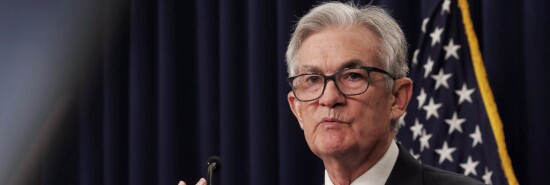
The case for Jerome Powell’s path forward: Straight Up with Tiana Lowe
Tiana Lowe
Video Embed
To close out the highest year of inflation since the Paul Volcker era, Federal Reserve Chairman Jerome Powell gave Wall Street an inch, only to take a mile. Finally proving himself worthy of filling Volcker’s shoes, Powell has defied investor expectations all year, bringing the federal funds rate to the 4.25% through 4.5% range and enacting quantitative easing significant enough to shrink the money supply for the first time since World War II. Powell decelerated rate hikes for the first time since the first half of this year. Hawks are concerned, while doves are apoplectic. But here is the case for Powell’s path forward.
For starters, Powell determined a trajectory of stability early on in the rate hike campaign. Rather than spike rates only to cut them, Powell plans to raise rates more modestly, though he still maintains “we’re not restrictive enough,” and keep them there. The Fed estimates that the federal funds rate will average at 5.1% next year and 2.5% in the long term.
FED SLOWS RATE-HIKING CAMPAIGN IN SIGN OF CONFIDENCE IN BATTLE AGAINST INFLATION
Why slow? Well, consumer spending is still robust, even as necessary asset bubbles deflate. Quantitative tightening, which has helped shrink the money supply by 1.5%, renders real interest rates a little more than a percentage point higher than the nominal target by the Fed. Furthermore, Powell doesn’t want to overshoot, lest he give the doves reason to cut.
Why not stop rate hikes entirely? The answer is obvious. As Powell asserts, the Fed’s target is 2% inflation. Core CPI is three times that. Contrary to the delusions of the fetid financier class, the Fed is not changing that target. In fact, the long-term interest rate projection is evidence that the Fed is shifting its entire framework away from that of the last decade, when zero interest rates reigned supreme.
The ultimate case for Powell’s path is that he’s held fast for nearly a year, facing Wall Street’s ire and refusing to back down. The Fed’s deceleration is a response to data, not popular opposition.
CLICK HERE TO READ MORE FROM THE WASHINGTON EXAMINER
What comes next? For more, tune in to the latest episode of the Washington Examiner‘s new series, Straight Up with Tiana Lowe.
